#Eco-Friendly Kitchen
Explore tagged Tumblr posts
Text
Unlocking the Secrets of Silicone Food Bowl Covers: Efficiency, Sustainability, and More

In this piece, we will touch on the efficiency and sustainability of silicone food bowl covers and more besides. So, take your favorite drink and sit on your most comfortable chair as we together unlock these mysteries. 😊
But first things first; let’s address the elephant in the room — it is quite tedious having to use traditional means for preserving food. The struggle is real; either finding where cling film ends or dealing with mismatched lids on containers can be very difficult. In addition, there is a question of ecological implications from piles of single-use plastics filling up landfills. 😔
However, don’t despair readers because there are silicone food bowls that have come to our rescue! 😃 These pliant wonders are an answer to all your food storage problems; they offer a minimalistic eco-friendly option just as painless as your sanity. 🙂😃😊
Check out these reusable silicone stretch lids over here!
Now, you might be asking yourself: “But aren’t silicone bowl covers just another gimmick?” It’s a valid question that deserves a well-rounded answer.
Silicone bowl covers may appear to be the latest kitchen gadget but they are much more. Unlike thin plastic wrap or hard containers, these silicone lids last long while also possessing various functions. They stretch so as to fit bowls of different sizes, making them airtight and the food inside stays fresher for longer. In addition, they could safely be used in microwaves, dishwashers, and freezers which makes them ideal for use by busy households. 🙂😃😊
Check out these stretchable and durable multifunctional food bowl covers!
But how exactly do these silicone food cover lids work? Well it is simple enough really. Simply pull the cover over your bowl and push it down to get a tight seal. The sides of the silicone grasp onto the sides of the container thereby preventing any spillages and holding in freshness. With these fitted on dishes that have leftovers or even those you’re using for potluck purposes; considering they remain watertight once tightly secured onto any given dish. 😃
Still not convinced? There’s more! Not only are silicone bowl covers practical but they are super eco-friendly too. Silicone lids can be reused severally without causing environmental pollution unlike cling film that is thrown into garbage after one use thus reducing waste and saving you money in the long run. Moreover these items are made from non-toxic material (BPA-free) therefore safe even when used in direct contact with food. 🙂
In conclusion, individuals who want to simplify their eating storage routines as well as reduce their carbon footprints should consider having some silicone meal lid covers. These products are efficient, sustainable and convenient all-round and so adding them means you would definitely equip your kitchen well. 😃😊🤗
So why don’t you give a shot at getting some silicone bowl covers? Believe me once you start using these things in your kitchen and experience how easy and versatile they make cooking to be then there will never be a time when you won’t have them. Stay blessed and happy-cooking, my friends! 😊🤗
You can get direct access to reusable silicone stretch lids for instant purchase by clicking right here!
#Sustainable food packaging#Eco-friendly kitchen#Efficient food packaging#Silicone food bowl cover#Kitchen supplies#eco-friendly cover lids#Effective food storage#Kitchen Enthusiasts
0 notes
Text
Eco Kitchen
Shop eco-friendly kitchen products from Organic Delivery Sydney.
#eco-friendly kitchen#kitchen#australia#blue mountains#canberra#newcastle#sydney#organic#wollongong#kitchen products#eco-friendly
0 notes
Text

Learn What Makes An Eco-Friendly Kitchen Beneficial
Find out about the factors that make a eco-friendly kitchen beneficial. For more information, take a look at this blog.
0 notes
Photo

Enclosed Kitchen in Denver With an undermount sink, flat-panel cabinets, light wood cabinets, marble countertops, white backsplash, porcelain backsplash, stainless steel appliances, and a peninsula, this large eclectic u-shaped kitchen photo has a light wood floor and a brown floor.
1 note
·
View note
Text
Ways To Make Your Kitchen More Eco-Friendly
We have already harmed Mother Nature in many ways. Hence, it’s high time that we make our way of living as eco-friendly as possible. Although legions of people are already trying to adapt to a sustainable lifestyle, a lot of things are still left to be done. So, we must purchase more nature-friendly items and less chemically processed products. Particularly, when it comes to your kitchen, you must use the various trending environment-friendly things over there. In this context, here are some tips to make your eco-friendly kitchen more sustainable.
1. Going green in your kitchen is easy and simple
Food leftovers and conventional plastic wastes inside the kitchen are immensely unhealthy for the environment. Besides, the trend of ordering takeaway meals nowadays is adding to this environmental pollution. You may wonder why but the packaging of such food items is mostly non-biodegradable. However, there are many nature-friendly ways to get over this issue smartly and efficiently. So, is going green in your kitchen the ultimate thing you want? Then, below are some easy-breezy hacks that would let you make your cookhouse even more environment-friendly.
2. Use nature-friendly agents to wash the dishes
Conventionally, the dishwashing agents we use contain a component called phosphate in them. It’s a harmful substance that can pose a threat to the environment. So, instead of using these products, you must opt for nature-friendly dishwashing liquids. Doing so will let you wash your dishes every day without inflicting Mother Nature at all. Since dishwashing is an imperative part of our daily parlance, we should resort to the nature-friendly way of doing it. Hence, the more people will use such organic dishwashing agents, the healthier it will be for the environment.
3. Use storage boxes made of bamboo and not plastic
Replacing plastic with bamboo is the need of the hour. If you search a bit meticulously, you will find plenty of kitchen-specific products in the market made of bamboo. These items are often reusable, hence, can be renewed and recycled as and when required. In fact, lunch boxes made of bamboo and polylactic acid are amazing alternatives to disposable plastic containers. So, you can pack your kids’ lunch in these storage boxes apart from preserving the leftover food items in them. Besides, you can also order your takeaway meals and ask your eateries to pack them in this eco-friendly lunch box. These small steps would let you take the next big leap towards protecting the environment.
4. Choose stainless steel straws over plastic straws
Plastic straws are extremely harmful to our encompassing environment. Sadly enough, we are paying little to no attention to this issue. Such a frivolous approach has led us to use plastic straws incessantly no matter what. Hence, we must start buying and using stainless steel straws sold by reputed brands as soon as possible. Doing so will not only let us live a nature-friendly life but will also make our kitchen more sustainable. You will get these straws in different sizes, shapes and colours on the market. Most importantly, these straws are customizable, so you can shop for them tailored to your individual needs.
5. Alternatives to stainless steel straws
In case, you are not able to find stainless steel straws in the market, there are some amazing alternatives to it. Silicone straws and straws made of glass and bamboo are a few of them. These straws are totally reusable hence, can be regarded as outstanding substitutes for harmful plastic straws.
6. Start using beeswax wraps in place of cling film
Some reputed eco-friendly brands have gone green with cling film as well. Yes, you have heard it right, instead, they have brought beeswax wraps onto the market. These reusable wraps are extremely high in quality and you can reap several of their benefits. Aside from just being eco-friendly, beeswax wraps can act as an antibacterial and antifungal agent for your kitchen. Hence, you can use them for as long as two years. Grab these amazing multicoloured beeswax wraps from your nearby store today. Just the way they look fabulous, they can reinforce your eco-friendly contribution significantly as well.
7. Go for those snazzy cooling bags
Gone are the days of using plastic cooling bags anymore. Now, it’s time to opt for super-ritzy yet easy-to-use eco-friendly cooling bags. These bags are generally made of high-quality materials that make them extremely resistant and sturdy at the same time. These bags can be excellent alternatives to your conventional single-use bags where you often carry your lunch. By carrying your food in these boxes, you can keep them fresh and intact for hours. On top of everything, you can use these bags for the whole of your life.
Time to embark upon your green journey!
There is no substitute for using biodegradable items to make our planet cleaner and greener. Hence, you too can incorporate the sustainable products mentioned above and make your eco-friendly kitchen stand out in the crowd. To satiate all your ecological needs impeccably, you can trust a brand like Chalo Green Products.
The article was originally posted on: Ways To Make Your Kitchen More Eco-Friendly
0 notes
Text
Creating Eco-Friendly Kitchen
Creating a Sustainable Kitchen: A Step Towards a Greener Future
Over the past 50 years, the world has become increasingly aware of the environmental challenges that jeopardize the well-being of future generations. Since the first Earth Day in 1970, numerous discussions, activities, and measures have been taken to address these issues. In 2023, even though we are facing unprecedented environmental damage, the trend towards sustainable products and eco-friendly lifestyles is on the rise.

Sustainable housing has gained significant attention in recent years, and the kitchen is an essential part of an eco-friendly home. In this article, we will explore how to transform your kitchen into a sustainable and environmentally responsible space.
Understanding the Sustainable Kitchen While there is no definitive description of a sustainable or eco-friendly kitchen, various combinations of energy-efficient and environmentally friendly materials can be incorporated to create a greener kitchen. From simple measures like replacing conventional light bulbs with LEDs to utilizing the latest energy-efficient technologies and eco-friendly materials, the level of sustainability in your kitchen is determined by your personal commitment to environmental conservation.

Benefits of a Sustainable Kitchen The primary advantage of an eco-friendly kitchen is its contribution to a healthier lifestyle and reduced environmental impact. However, there are additional benefits to consider:
Improved health: Using eco-friendly materials in the construction or renovation of your kitchen can significantly enhance indoor air quality and reduce exposure to harmful substances, such as formaldehyde.
Increased home value: As more people adopt eco-friendly practices, homes with sustainable features like green kitchens are in high demand, boosting their value in the market.
Cost savings: Green kitchens offer long-term financial savings through energy-efficient appliances, composting, and reusable materials.
Enhanced aesthetics: Eco-friendly materials, such as bamboo or salvaged wood, add unique and natural charm to your kitchen.

reating a Sustainable Kitchen To create an eco-friendly kitchen, consider incorporating the following sustainable materials and energy-efficient accessories:
Materials:
Natural stone countertops
Butcher block countertops with FSC-certified wood
Natural wood or bamboo flooring with FSC-certified materials
Recycled glass tiles
Salvaged wood for flooring and cabinetry
Recycled metal for sinks, backsplashes, and countertops
Energy-efficient accessories:
LED lights
ENERGY STAR-rated appliances
Induction cooktops
Best Practices for Sustainable Kitchen Design If you are remodeling or building a new kitchen, consider the following sustainable practices:
Reface cabinetry to use less wood and save money
Use low or no-VOC finishes to improve air quality and reduce pollution
Choose plastic-free, eco-friendly paint to minimize environmental impact
Design Ideas for Eco-Friendly Kitchens Incorporate sustainable materials and design elements to create a stylish, eco-friendly kitchen:
Reclaimed flooring for a unique and timeless look
Maximize natural lighting to reduce energy consumption
Use antique or vintage furniture and décor to add character and minimize waste
Conclusion Creating a sustainable kitchen not only benefits the environment but also promotes a healthier and more responsible lifestyle for your family and future generations. As environmental awareness continues to grow globally, transforming your kitchen into an eco-friendly space is a significant step towards a greener future.
Read our article: "Kitchen remodeling: the most popular questions answered" to get more insight into the kitchen remodeling process
1 note
·
View note
Text
I know it's better for the environment but I kind of miss when street lights and headlights and everything were softer and warmer.
#my one blatant act of environmental destruction is that I still only use incandescent lights in my own home where possible#because all the eco friendly options I've tried make my brain scream if I turn them on#and I will straight up walk around in the dark rather than use them#I need to replace some of the lights in my house the previous owners use Bad Lights everywhere but the kitchen for some reason#so I only ever use the kitchen lights at night
42 notes
·
View notes
Text
Easy zero waste tip no. 6: Find out what caffeinated beverage you actually want/need, then learn how to make it; aka "The Starbucks Lie"
Tl;Dr: You may be misinformed about how coffee actually works, leading you to purchase beverages that you may not actually like, that may not serve the purpose you want them to serve, and you can save money (and the environment!) by learning to make something you'll actually like at home.
Last week, I went to Starbucks to get a pumpkin chai latte, because I'm not perfect and needed to fulfill a craving on a bad day- but at least I used a reusable cup. Anyhow, while I was there, I witnessed the following conversation, not for the first time, nor the last, which I'm sure is commonplace:
Barista: What can I get you?
Customer: Do you have a dark roast? I like my coffee dark.
B: We just have a medium roast ready, but I can do a dark roast pourover.
C: Nah, that's not going to be enough caffeine for me, and I need drip coffee, not anything fancy. I'll have an Americano, then- espresso beans should be high enough in caffeine!
Now, if this seems like a reasonable exchange, that's ok- you're likely not a trained barista, and even if you are, there's a chance your training was at least a little bit wrong. Let's walk through it point by point, to explain why this exchange made me want to tear my hair out of my head.
"I like my coffee dark!" Most likely, this is false- studies have shown that people are most likely to say they want dark coffee, when they actually most enjoy a lighter or medium roast. Darker roasts are bitter, partially due to having more tannins- which is why they can cause more side effects, like headaches and digestive issues.
"Not enough caffeine" In fact, the longer (darker) you roast coffee, the more caffeine it loses. If you want a highly caffeinated beverage, you should opt for the lightest roast available.
"I need drip coffee, not anything fancy (pourover)" Pourover is essentially a method of making drip coffee one cup at a time. No machine or anything, it's the least fancy coffee option possible.
"Espresso beans should have high enough caffeine" The beans used for espresso are the same as the beans used for the drip coffee- they're just ground more finely before going through the machine.
"An Americano [...] should have enough caffeine" An Americano is a double shot with hot water, about 160 mg of caffeine if you're getting a 'grande'. A drip coffee that same size is over 300 mg.
This man claimed to love coffee, but didn't understand anything about it, leading him to pay $4.39 for 160 mg of caffeine instead of $3.28 for almost double that- keeping in mind that number could easily have been doubled again had he opted for the lighter roast. So, let's fix that.
1. Light or Dark Roast?
Have you ever wondered why Starbucks has a medium roast, the Pike Place, as their go to roast all the time? It's because it's the most middle of the road, bland option, completely inoffensive- not very good, but also, not too bad. It's a blend from a bunch of places, so there's no overwhelming flavor besides coffee with a slight hint of being burned. That burn taste everyone complains about, btw, is a result of the roast being too dark for them, hello tannins!
A lot of things happen to coffee as you roast it. Let's go through each point one by one:
The color changes. The darker the roast, the darker the roast- literally. This is best gauged with ground coffee, where you can see the average of the whole bean, not just the outer shell.
The mass decreases due to a loss of moisture. However, the bean actually expands in volume due to the strength of the cell walls. In essence, the density decreases.
Oils seep out from inside of the beans, coating them, and protecting volatile chemical compounds that give them flavor.
The caffeine content is lessened the longer you roast.
With high heat, the Maillard reaction occurs. While this reaction is responsible for the lovely color and the viscous, dark flavor notes, it's also responsible for breaking down the citric and tartaric acid, which causes the sweet and fruity flavors to dissipate. It also breaks down chlorogenic acid, creating caffeic acid and quinic acid, aka bitter, bitter tastes.
High heat also causes caramelization of sugars- but at a certain point, those sugars start to burn away.
Taking all this into consideration, we can begin to figure out what kinds of coffee you'll actually like. One quick note: always get single origin coffees. Each region has its own flavors, and if you're only getting coffee from one spot in your cup, then those notes will be amplified for your enjoyment.
A dark roast will have less caffeine, a stronger coffee bitterness, and very simple, up front flavors: chocolate, nuts, smoke, wood, etc. (My favorite tastes like dark chocolate with a hint of hickory)
A light roast will have more caffeine, a lesser amount of bitterness, and very complex, more nuanced flavors: citrus, caramels, fruits, florals, etc. (My favorite tastes like blueberries and white chocolate, with notes of almonds)
No two coffees are alike. My recommendation is that you purchase a bag of whole beans from your favorite local cafe or roaster based on your caffeine needs, and try out different beans until you find one- or two, or five, or a dozen- that you really love.
One quick note- a much, much greater flavor difference can be found in aerobic v. anaerobic roasted beans. I recommend reading into this process on your own, it's fascinating- both of my favorite coffees are anaerobic roasts, as it happens.
2. How should I make my coffee?
I'm a big fan of the affogato. I'm a dessert for breakfast kind of gal, so it makes sense; a hefty double shot over a scoop of ice cream. Absolutely divine; I pretty much only do espresso for myself, although my partner greatly prefers French press.
The overall rule for caffeine in your coffee is that the finer the grind, the more caffeine you're going to get out of the bean. That being said, that doesn't mean the final product will actually have more caffeine than another method, as different ways of making coffee require different amounts of coffee grounds. Keep the ratio of grounds to water in mind for this reason. However, you must remember that the perceived strength of the beverage- the concentration of flavors- is not necessarily correlated to the amount of caffeine. I'll now go over a few methods of making coffee which can be 100% zero waste (assuming you compost those coffee grounds!).
Cold Brew- You either let grounds freely float in water, or let them steep inside of a little filter bag. Let it rest overnight, up to 48 hours. If you like your coffee cold, and not a lot of effort, this might be your best bet.
Pourover- You put grounds into a little filter over either your cup or a pitcher. Pour water over the filter and let it drip down. If you like having a calming morning ritual, this might be for you. Essentially the same as drip coffee, except you don't have to care about a machine.
French press- You put grounds in the bottom of the press, then fill with hot water, and let it steep for a few minutes, then press the grounds down. If you don't mind a little work every morning, waiting a few minutes (when you could prep your breakfast, perhaps) then give this a go.
Moka pot- You pour water into the base, then put grounds into the basket, then screw on the top. Place on the stovetop, and remove as soon as the coffee begins to come out of the spout within. If you like a strong cup but don't want to invest in espresso, this is a great option. The pressure is too low for it to be true espresso, but it's very good.
Manual espresso- This is a bit more complex. It will be the same as automatic espresso, except there's no chance of the machine failing for any electronic reason. You fill a little basket with grounds, then tamp them down. Water is brought to temperature, then pressed through the espresso at a relatively high psi. If you want espresso, this is the way. You can get an entry level (Flair makes several that are fantastic) or you can get something high end with a built in boiler (I have a La Pavoni with an attached steam wand, great purchase).
Automatic espresso- Essentially the same as manual, but the machine does the pressing for you. If you love espresso but don't want to do a lot of work for it, this is a great investment! If you can buy used, do- just make sure the brand is one that offers replacement parts.
There are plenty of other options, but these are a good place to get started, when figuring out what works for you.
3. Why do I want my coffee?
Are you looking for a caffeine boost to get through a rough workday? Do you want something sweet to accompany your breakfast? Are you just bored?
Figure out why you want your coffee, then tailor your morning experience to your needs. If you need a caffeine boost for a rough workday, maybe don't do anything time consuming- prepare a middle of the road medium roast cold brew for the week on Sunday, and go ahead and grab a glass in your hurry out the door each morning. If you want something sweet with breakfast, get a light roast and a French press, and make it part of the routine for the meal. If you're bored, do pourover with a dark roast into a funky mug, or learn to steam milk to make latte art.
Really, coffee is something lovely, that you should enjoy, without mindlessly spending money on something that's not even good. As a bonus, you can support local businesses (coffee roasters and cafes), develop a new skill, and better the environment.
#zero waste#sustainability#anti consumerism#anti consumption#sustainable#eco friendly#environment#cooking#food#kitchen#coffee#cafe#barista#coffee maker#coffee machine#espresso
119 notes
·
View notes
Text
Kitchenware
Cake Easy Out - little invention for when your cakes stick to the bottom of the pans
Gneiss Spice - magnetic spice jars + organic spices
Living Pantry - family-owned eco-friendly shop > I know this is in the household stuff too but it's got entire kitchen sections too
Skyclad Apothecary - aka Zero Waste Apothecary, bulk herbs, oils, spices, clays, etc.
#shop small businesses#small businesses#kitchen#cooking#baking#pastry#cake#apothecary#herbs#herbalism#eco friendly#zero waste#environmentalist#spices#magnetic spice jars
3 notes
·
View notes
Text
Eco-Friendly Modular Kitchen Accessories for a Greener Home
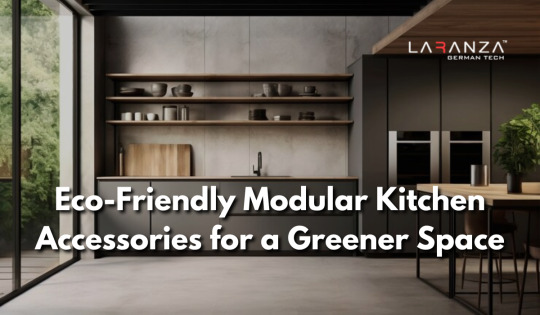
Discover eco-friendly modular kitchen accessories that promote sustainability. Transform your kitchen into an efficient, greener space.
#Modular Kitchen Accessories#Modern modular kitchen accessories#eco-friendly modular kitchen accessories#Efficient waste management#Pull-out waste segregation systems#plastic drawer organizers#bamboo cutlery trays#Energy-efficient LED lighting#cabinets and drawers#countertop compost bin#Multi-tiered pull-out pantry units#Eco-friendly faucets#Solar-powered appliances#modern kitchen#kitchen accessories#reusable storage containers#sustainable kitchen solutions
2 notes
·
View notes
Text
I am waging psychological warfare with a colony of fire ants.
#bark bark bark#I TRY to be eco friendly as much as possible when it comes to killing pest insects (THEY ARE TRYING TO MOVE INTO THE HOUSE!)#and for the most part that means dumping boiling water on anthills when I see lines of ants going from them into the house#i have been doing that for three days and NOW they have decided to move everyone INTO the kitchen wall#where i can decidedly not pour boiling water#started with pinesol spray tonight but if they are back with a vengeance tomorrow it may be time to go to the hardware store
6 notes
·
View notes
Text

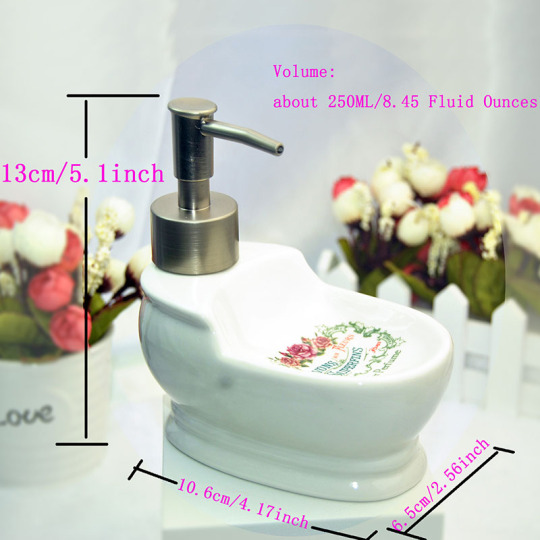




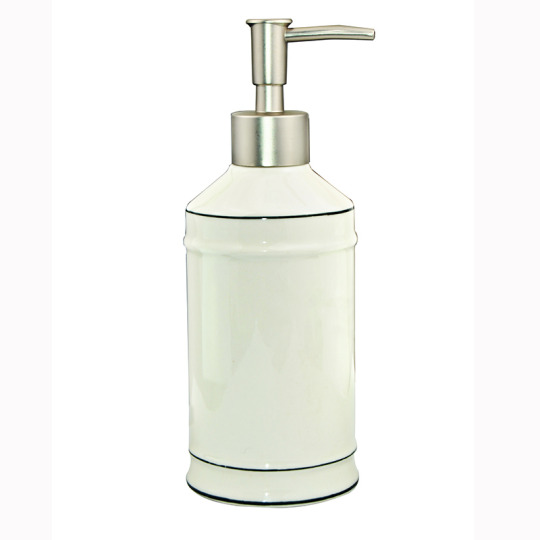
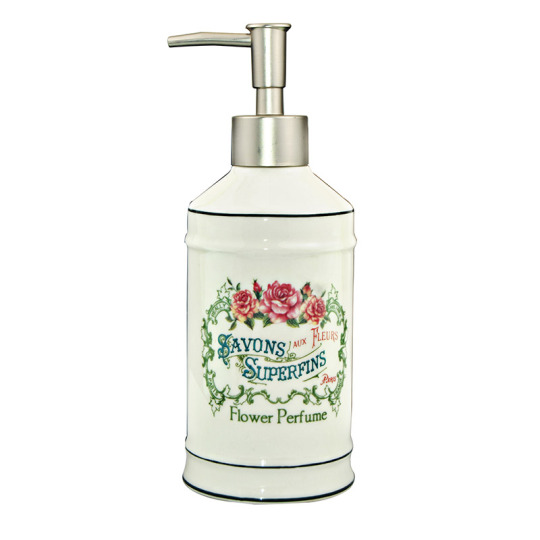
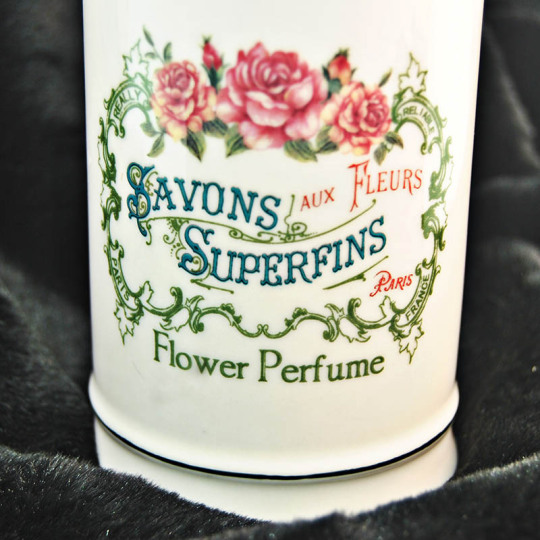

Ceramic Soap Dispenser Lotion Gel Liquid Pump Bottle Paris Rose Savons Aux Fleurs Superfins Flower For Kitchen Sink https://foreverceramic.com/product/ceramic-soap-dispenser-lotion-gel-liquid-pump-bottle-paris-rose-savons-aux-fleurs-superfins-flower-for-kitchen-sink/
#Soap dispenser#Liquid soap dispenser#Automatic soap dispenser#Wall-mounted soap dispenser#Commercial soap dispenser#Hand sanitizer dispenser#Manual soap dispenser#Bathroom soap dispenser#Kitchen soap dispenser#Countertop soap dispenser#Refillable soap dispenser#Modern soap dispenser#Industrial soap dispenser#Decorative soap dispenser#Eco-friendly soap dispenser#Ceramic soap dispenser#Handmade ceramic soap dispenser#Bathroom ceramic soap dispenser#White ceramic soap dispenser#Modern ceramic soap dispenser#Designer ceramic soap dispenser#Vintage ceramic soap dispenser#Artisan ceramic soap dispenser#Kitchen ceramic soap dispenser#Elegant ceramic soap dispenser#Ceramic pump soap dispenser#Rustic ceramic soap dispenser#Unique ceramic soap dispenser#Custom ceramic soap dispenser#Ceramic soap pump
5 notes
·
View notes
Text
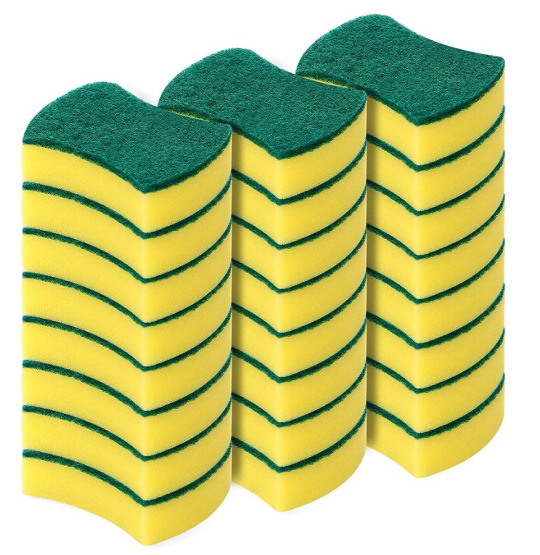
Kitchen Cleaning Sponges,24 Pack Eco Non-Scratch for Dish,Scrub Sponges
7 notes
·
View notes
Text
Eco-Friendly Tips for Barbecue and Picnic's
1. Plan Ahead
- Reusable Items like cloth napkins, glass bottles - Compostable Serveware - Bulk Purchasing
2. Responsible Food Choices - Local and Organic - Plant-based Options
3. Waste Management Strategies - Recycling - Composting - Garbage
4. Cleaning Strategies Post-Event - Eco-friendly Cleaning Supplies: Biodegradable Cleaning Products, and DIY Cleaners. - Reuse and Uphold: Keep Leftovers and use Reusable Decor and Supplies. - Charity Donations: Food, Kitchen Items.
5. Encourage Guest Participation: Divide cleanup tasks among guests to make the process more efficient and emphasize the importance of sustainability.
6. Green Grilling Tips - Choose Efficient Equipment: If you’re using a gas grill, make sure it’s in good working order and use propane over charcoal, as it burns cleaner. - Natural Charcoal: If you prefer the flavor of charcoal grilling, opt for natural lump charcoal over briquettes, which often contain additives and produce more smoke. - Electric Grills: Consider using an electric grill if you have access to renewable energy sources like solar panels at home.
So this summer, remember: it’s not just about the fun and food, but also about taking steps to safeguard our environment! Embrace these green tips and make your gatherings a model of sustainability. Happy summer grilling and picnicking!
If you need a professional hand with eco-friendly house cleaning in San Francisco, book our services in GreenTerra!
#cleaning#cleaning tips#eco-friendly#eco-friendly cleaning#green cleaning#bathroom#bedroom#climate change#kitchen#green day#green summer
3 notes
·
View notes
Text
Eco-Friendly Cleaning Products for a Green Kitchen
When choosing eco-friendly cleaning products, consider the following factors:
Ingredients: Look for products that clearly list their ingredients and avoid those that contain harsh chemicals such as ammonia, chlorine, phthalates, and artificial fragrances. Instead, opt for plant-based ingredients and natural substances like vinegar, baking soda, essential oils, and citric acid.
Certifications: Check for third-party certifications on the product packaging, such as the USDA Certified Biobased, EcoLogo, Green Seal, or Safer Choice labels. These certifications ensure that the product meets specific environmental and health criteria.
Packaging: Consider the packaging of the product. Look for options that use recyclable or biodegradable materials and minimize the use of excessive packaging. Refillable or bulk options can also help reduce waste.
#sustainability#sustainable living#ecoconscious#eco friendly design#waste#sustainable kitchen#green kitchen#cleaning tips#cleaning#ecofriendly#cleaning products
2 notes
·
View notes
Text
Enhance Your Culinary Haven with Kitchen Runner Rugs from The Rug Collective
The kitchen is undeniably the heart of the home, where meals are prepared, memories are made, and loved ones gather to share in the joy of good food and good company. As one of the most frequently used spaces in any household, it's important to create a welcoming and functional environment that reflects your personal style and enhances your culinary experience. One simple yet effective way to achieve this is by incorporating kitchen runner rugs, and at The Rug Collective, we're proud to offer a diverse selection of high-quality kitchen runners that marry style, durability, and practicality.
The Role of Kitchen Runner Rugs
Kitchen runner rugs are not just decorative accents; they serve a multitude of purposes that make them essential additions to any culinary space. From protecting your floors against spills and stains to providing cushioning and support for your feet during long hours of cooking, kitchen runners are versatile workhorses that elevate both the form and function of your kitchen.

These elongated rugs are ideal for placing along the length of kitchen counters, islands, or in front of sinks and stovetops, where they help to define pathways, absorb noise, and add a touch of warmth and softness to hard surfaces. Additionally, kitchen runner rugs can inject personality and style into your kitchen decor, serving as focal points or tying together various design elements for a cohesive and inviting look.
Quality You Can Count On
At The Rug Collective, we understand the importance of quality and craftsmanship when it comes to selecting the perfect kitchen runner rug. That's why we meticulously curate our collection to ensure that each rug meets our exacting standards for durability, performance, and aesthetic appeal.
Our kitchen runner rugs are crafted from premium materials such as wool, cotton, and synthetic blends, chosen for their durability, stain resistance, and ease of maintenance. Whether you prefer a classic pattern, a bold geometric design, or a subtle textured weave, our diverse range of options caters to every taste and style preference.
Furthermore, our commitment to quality extends beyond the materials used to make our rugs. We work closely with skilled artisans and reputable manufacturers who share our dedication to excellence, ensuring that each rug is expertly woven or tufted to withstand the demands of daily kitchen life while retaining its beauty and integrity for years to come.

Transform Your Kitchen with The Rug Collective
Ready to elevate your culinary haven with a stylish and functional kitchen runner rug? Look no further than The Rug Collective. With our carefully curated selection of high-quality rugs, impeccable craftsmanship, and commitment to customer satisfaction, we're your go-to source for premium kitchen runners that enhance your space and inspire your culinary adventures.
Browse our collection today to discover the perfect kitchen runner rug that complements your style, suits your practical needs, and transforms your kitchen into a welcoming oasis of comfort and charm. At The Rug Collective, we're passionate about helping you create a home that reflects your unique personality and enhances your everyday life, one rug at a time.
VISIT US!
7022 AC Skinner Pkwy, Jacksonville FL 32256, USA [email protected]
2 notes
·
View notes